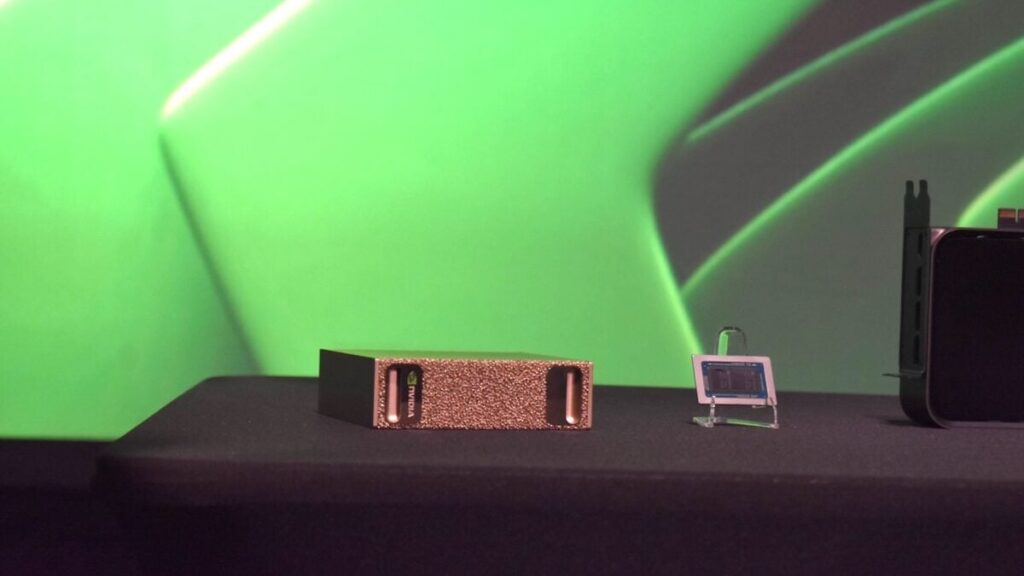No, your new “AI PC” or “Copilot+ PC” is not great at running AI—at least, not with any amount of compute that matters. The real artificial intelligence is being processed behind the closed doors of sprawling data centers that are currently springing up all around the United States. Nvidia, which became a trillion-dollar company thanks to AI, is now asking you to stick an ounce of that cloud on your desk.
Nvidia first announced its $4,000 DGX Spark AI compute machine, then dubbed “Project Digits,” during CES 2025. If you don’t remember the specifics, I don’t blame you. While CEO Jensen Huang was talking up the AI and graphics capabilities of the firm’s RTX 50-series GPUs, Spark was being pushed elsewhere on the floor as an at-home device built specifically for high-end AI workloads. The company went so far as to call it a “new class of computer” in its announcement post—despite the fact that it’s powered by a Blackwell chip, an architecture that shows up across several other Nvidia lines.
The DGX Spark is set to start shipping on Wednesday. Nvidia’s usual partners like Acer, Asus, Lenovo, MSI, Dell, and Gigabyte are already lined up to put out their own versions of the device. You may not find those products when roaming the sparse halls of your nearest Best Buy, but Nvidia said it will ship them to Micro Center stores in the U.S. Nvidia made a big deal of handing out Sparks to major companies like OpenAI and Microsoft, as well as to Elon Musk at the Starbase headquarters in Texas. Maybe the billionaire founder of xAI will plug it in and use it to vibe code that AI-centric “Wokipedia” competitor—which he promised would help people “understand the universe.”
You won’t use the ‘AI supercomputer’ for anything but AI

I saw both Nvidia’s and Acer’s versions of Spark at IFA 2025. They both looked like big, shiny mini PCs—but they weren’t actually running Windows. Spark runs a customized, Ubuntu-based Linux distribution loaded with several of Nvidia’s AI tools for AI image models and LLMs, or large language models. A 20-core, ARM-based CPU accompanies a Grace Blackwell GPU. If all that mattered was core count, the Spark would tie Nvidia’s GeForce RTX 5070, one of its lower-end GPUs.
On its face, those specs don’t sound very “supercomputer.” But inside, you’ll find much more performance and power draw than a typical desktop PC. The 2.65-pound Spark box holds 128GB of system memory and 4TB of storage. Its Blackwell chip promises 1 petaflop of AI compute performance, which is many times more than the 170 teraflops Nvidia’s 2016 DGX-1 AI compute machine offers, though it’s worth noting that flops, a measure of how fast a GPU can perform a certain number of floating point operations per second, are a rough metric. The Spark is also running at 240W, compared to the older model’s 3,200W power draw.
For another loose example of AI compute capability, the DGX Spark promises to perform around 1,000 TOPS, or trillions of operations per second. Though that comes in below the RTX 5090, which boasts 3,352 TOPS, it surpasses any equivalent PC of the same size, and its memory puts it over the edge for the sake of developing and designing the next chatbot. For comparison, Qualcomm’s upcoming Snapdragon X2 Elite Extreme chip is supposed to be much better for AI than its predecessor, thanks to a redesigned neural processing unit, but that can only claim 70 TOPS of AI performance. Your usual PC is still limited to running extremely low-end AI models or background AI tasks.
Oh, and all of that comes with a retail price of around $4,000. Don’t worry: Nvidia doesn’t expect every Joe Schmoe to buy one of these for the sake of running Windows 11 Recall. The DGX Spark is built for nascent AI developers, students, or, perhaps, curious AI dabblers who can afford to drop the equivalent of two $2,000 RTX 5090 GPUs to buy a specialized computer. Its real mission is to get more developers to create AI applications that people actually want to use—or, in Huang’s words, “the next wave of breakthroughs.” Hopefully, that’ll take the form of something beyond a chatbot interface promising to fix home decoration or remedy the abstract concept of loneliness.

